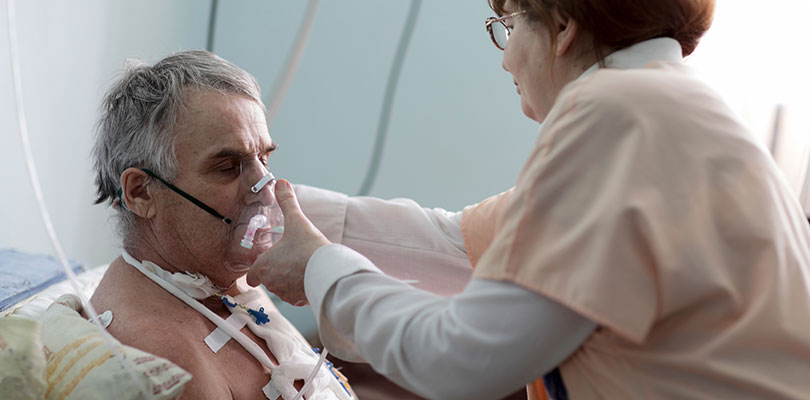Costochondritis and Fibromyalgia
Costochondritis is the name used to describe inflammation of the cartilage that connects the ribs to the sternum (breastbone). It is a problem that frequently affects people with fibromyalgia and results in symptoms such as chest pain and difficulty breathing.
Let’s take a look at the link between costochondritis and fibromyalgia and how to relieve the symptoms of this painful condition.
Costochondritis and Fibromyalgia
People with fibromyalgia can experience pain and stiffness anywhere in their bodies, including the chest. In fact, two of the 18 tender spots used to diagnose fibromyalgia are located on the upper chest. However, these points usually become equally tender on both sides of the chest, whereas costochondritis tends to affect one side.
Fibromyalgia leads to widespread pain by causing inflammation of the muscles, joints and tendons. It can also affect the cartilage as it does in costochondritis. People with fibromyalgia also experience increased levels of pain due to an imbalance in neurotransmitters such as glutamate and GABA, and a chemical called substance P.
Chest pain is a common symptom for fibromyalgia patients, and is thought to affect approximately 10% of people with the disease. Fibromyalgia may also account for many cases of non-specific chest pain (i.e. chest pain that is not associated with heart problems or another condition). One study of 40 patients with chest pain found that 30% of those without heart problems were suffering from fibromyalgia, and 10% with costochondritis.
Therefore, it is no surprise that there is a great deal of overlap between costochondritis and fibromyalgia.
What Is Costochondritis?
Costochondritis is inflammation of the cartilage between the ribs and the sternum. Its primary symptom is chest pain which can range from a mild, dull ache to severe, sharp or stabbing pain. Costochondritis pain may come and go and is usually worse with movement, pressure, coughing, sneezing and deep breathing. It may also lead to painful and difficult respiration.
There are several possible causes of costochondritis. These include the following:
- Traumatic injury
- Muscle strain
- Infections
- Wear and tear
- Inflammatory conditions such as arthritis and fibromyalgia
In some cases, no clear cause of costochondritis can be identified. The condition is usually diagnosed by a combination of electrocardiogram (ECG) to rule out heart problems, x-rays and blood tests.
Since the symptoms of costochondritis can be similar to those of serious conditions like heart attacks, it is important to have them investigated by your physician.
Costochondritis Relief
Costochondritis usually clears up by itself in a matter of weeks, and treatments are focused on relieving pain in the meantime. Some of the most popular options for costochondritis relief include:
Medication
Medication such as painkillers and anti-inflammatory drugs can be used to reduce pain while waiting for costochondritis to heal. This could mean over-the-counter remedies such as acetaminophen or ibuprofen, or stronger prescription painkillers if necessary.
Some of the drugs typically used to treat fibromyalgia may also help relieve costochondritis pain for people with the condition. These include anti-seizure drugs such as pregabalin (Lyrica) and gabapentin (Neurontin), and antidepressants such as amitriptyline (Elavil) and duloxetine (Cymbalta).
Of course, all of these medications come with their own risks and side effects, and you should discuss these with your physician before using them for the first time.
Home Remedies
There are also a number of home remedies that may offer some costochondritis relief. These include heat packs and ice packs, both of which can be applied for up to 20 minutes, several times a day. Experiment with hot and cold to see which works best for you, and always protect your skin by wrapping heat and ice packs in a towel.
The connection between fibromyalgia and anxiety is complex — as fibro symptoms worsen, anxiety increases, and as anxiety worsens, fibro symptoms increase.
Gentle stretching and exercise are also effective ways to relieve some of the pain associated with costochondritis. Recommended stretches include resting a bent arm on a wall and twisting away to open up the chest muscles. However, you should speak to a physical therapist before starting any stretching or exercise regime to ensure you use the correct technique and will not end up making matters worse.
Rest and relaxation are also great ways to manage costochondritis pain at home. Take it easy for a few weeks and avoid doing any activities that could aggravate the problem.
Alternative Therapies
Many people with fibromyalgia find that alternative therapies such as acupuncture and massage help them manage their pain and other symptoms. Although there is limited evidence for the effectiveness of these treatments, they are generally considered safe and should not cause any serious side effects.
Practices such as cognitive behavioral therapy (CBT) and mindfulness may also play a role in pain management. Although they do not address the underlying cause of fibromyalgia and costochondritis, they do teach you coping strategies that can make pain much easier to handle.
When to See Your Doctor About Chest Pain
The symptoms of costochondritis can be easily confused with those of other conditions. Therefore, it is important to see a physician if you are experiencing any kind of chest pain for the first time.
You should make an appointment to see your physician urgently or visit the emergency room if you experience any of the following:
- Chest pain that starts in the chest and radiates to the left arm or jaw
- Chest pain that is "heavy" or "crushing" in nature
- Chest pain accompanied by sweating, nausea or pale skin
- Chest pain that becomes worse with physical exertion
- Chest pain with dizziness, fainting or palpitations
Although your chest pain may be caused by something as simple as costochondritis or fibromyalgia, it is always best to know for sure.







